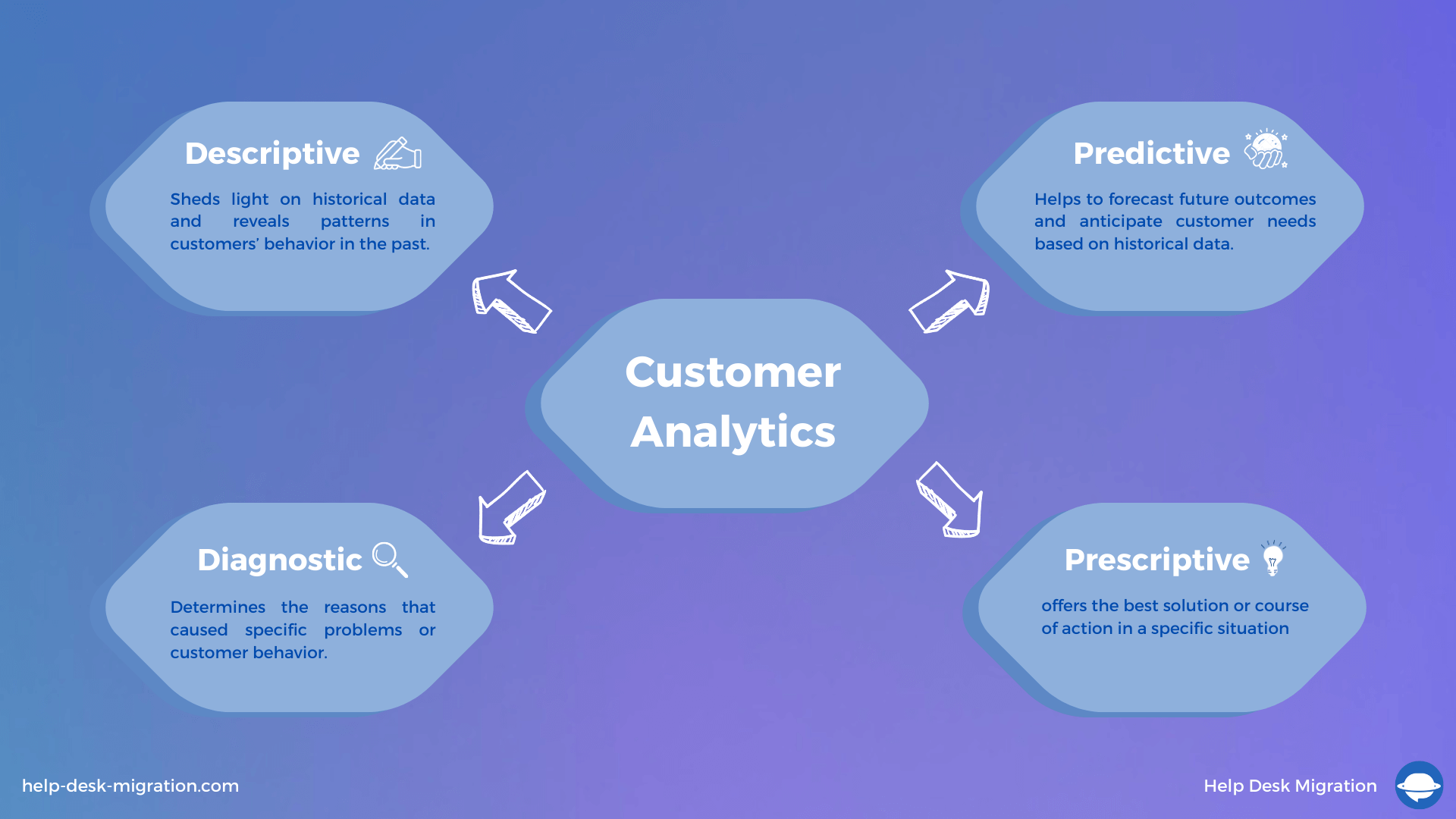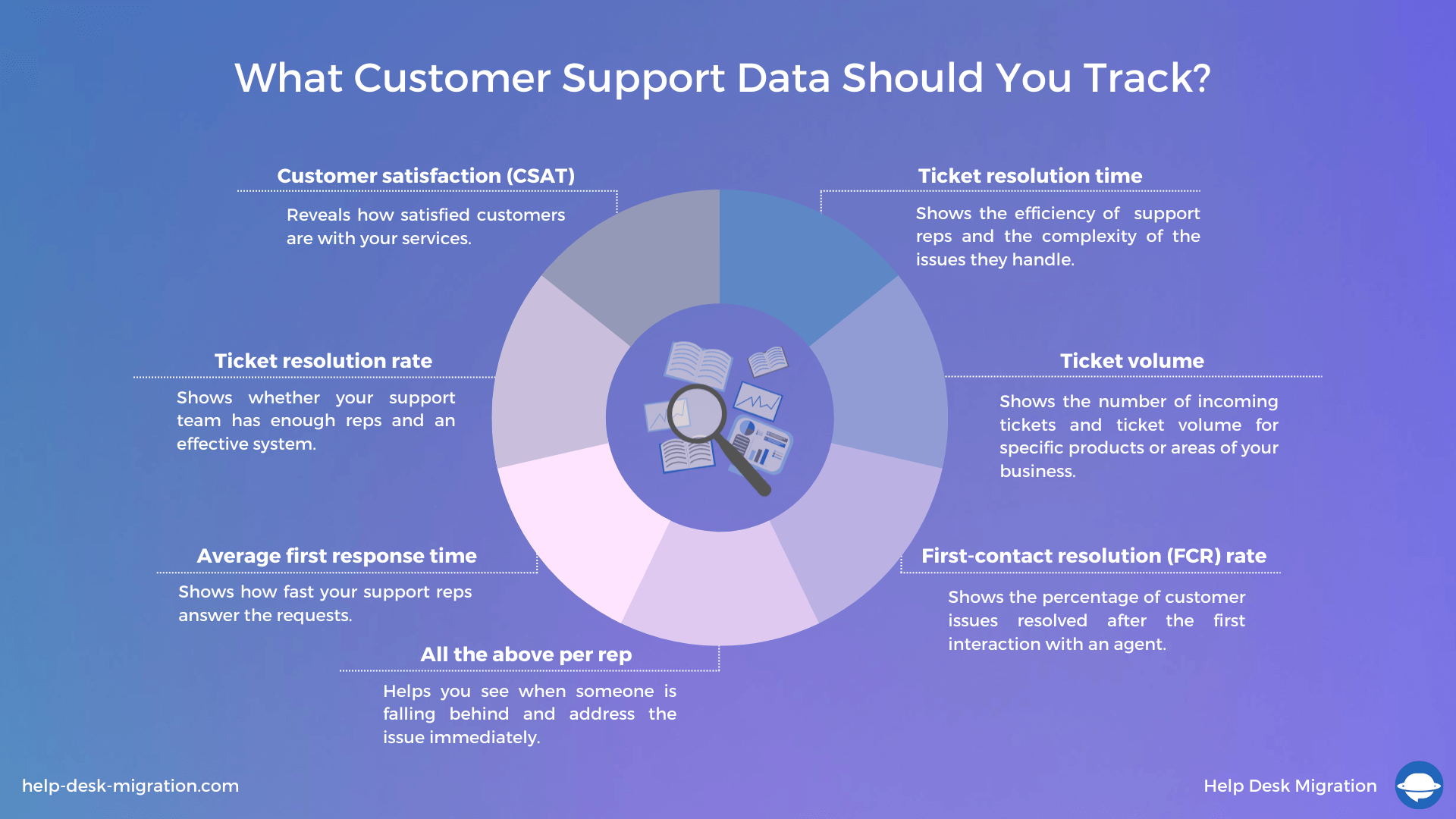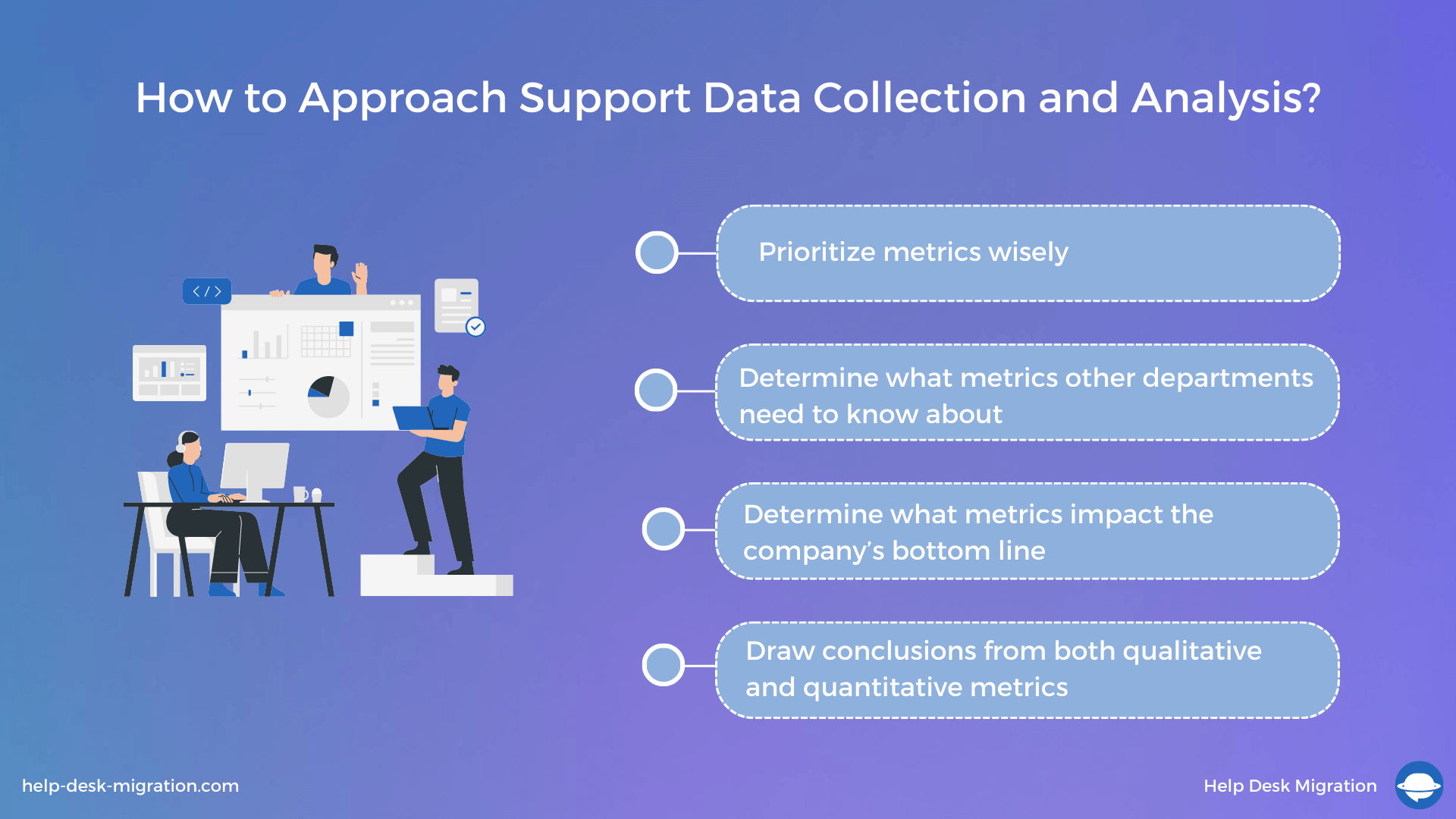Customer support data can be a gold mine if handled correctly.
Imagine that after rolling out your app, you start receiving frequent messages about users not being able to sign in. After looking closer at your dashboard, you see that all the requests are coming from the UK. This information helps your product team quickly detect the problem and find the solution, no Sherlock needed.
This is just a small example of how support data can save your reputation and improve the customer experience. With an average medium-to-large company receiving 578 tickets per day, imagine the terabytes of valuable business data the company is constantly receiving.
But how do you turn scattered support information into actionable insights? This is where customer analytics comes in.
Customer support data: Definition and Types
Customer support data can be quantitative and qualitative. Quantitative or structured data is everything you can put a number on and count, such as the number of addressed tickets, a customer satisfaction (CSAT) score, or knowledge base pageviews. Qualitative or unstructured data is the opposite. It might come in the form of responses people leave when interacting with your support agents or recorded phone calls.
Having all this information is good and all, but if you don’t use it, it just clutters up space. You need thorough customer analytics to make it work.
What Is Customer Analytics?
Customer analytics, or customer data analysis, is the process of collecting, organizing, and making sense of customer data.
There are four types of customer analytics:
- Descriptive analytics: sheds light on the historical data and reveals patterns in your customers’ behavior in the past
- Diagnostic analytics: determines the reasons that caused specific problems or customer behavior
- Predictive analytics: helps to forecast future outcomes and anticipate customer needs based on historical data
- Prescriptive analytics: offers the best solution or course of action in a specific situation

You can use tools like Google Analytics and customer service software to collect and distill customer information (including customer support data) into valuable business insights. Yes, they are valuable. And that’s…
Why You Should Collect Customer Support Data?
If you catch yourself hesitating when it comes to collecting customer support data, these reasons may help tip the scales in favor of action.
You can evaluate the performance of your support team
Customer support data shows right away if your team is underperforming. More than that, it allows you to spot the reasons why and solve those issues. For example, if you see your reps responding to requests later than they should, you may set up a system that reminds them about the approaching response deadline.
You can improve your bottom line
Your support department is the voice of your customers. The voice that can point your attention to the undetected bugs in your product, out-of-stock items, problems in your internal process, or indifferent support. Listening to this voice and drawing data-backed conclusions from it will help you anticipate customer needs, improve customer retention, and achieve the set company-wide goals.
You can increase buy-in from stakeholders
Convincing your management to give you money is always a tall order, especially if your company is bootstrapping. Numbers help you back up your case and get the funding you need. So you can use your customer support data to showcase how good your things are going.

And if the data isn’t as appealing as you’d hoped, at least you’ll know what to improve before going to the managers or investors.
But how do you decide what metrics to focus on? We mean, is all customer data good enough to collect, analyze, and store it? Of course not.
What Customer Support Data Should You Track?
Ideally, this answer should depend on your business goals at a given moment. But to give you a general picture, here are some customer service metrics you might want to keep tabs on at all times:
- Customer satisfaction (CSAT). A simple survey like net promoter score (NPS) for customer service can help you to reveal how satisfied customers are with your services. If the score is high, you are on the right track, offering a superior customer experience. If not, it’s time to look closely at other metrics down the list.
- Ticket resolution time. This metric tells you two things: the efficiency of your support reps and the complexity of the issues they handle.
- Ticket resolution rate. High-resolution rates show that your support team has enough reps and an effective system. Most customer support platforms calculate the rate for you, but here’s how you can do this yourself:
Resolved Tickets/Total Tickets x 100 = Ticket Resolution Rate (%)
- Ticket volume. You can track the general number of incoming tickets and ticket volume for specific products or areas of your business to highlight problems.
- Average first response time. This metric tells you how long your customers wait after they submit a request before your support agents get back to them.
- First-contact resolution (FCR) rate. A high FCR rate occurs when a high percentage of customer issues get resolved after the first interaction with an agent. A high FCR indicates that your team is effective and specific in addressing customer issues.
- All the above per rep. Having performance benchmarks for different seniority levels is important as it helps you see when someone is falling behind and address the issue immediately.

This is just some of the data you can measure to stay on top of things, and you’re welcome to incorporate other metrics into your processes.
How to Approach Support Data Collection and Analysis?
Capturing customer support data from your help desk system isn’t enough. To see the results, you also need to put this data to use. Here are a few ways to handle your newfound information effectively:
- Prioritize metrics wisely. There are metrics like CSAT or first response time you should always keep your eye on. Other metrics, like the individual performance of agents, can show up on your radar once a month. Decide what matters for the agenda and focus on one thing at a time.
- Determine what metrics other departments need to know about. Before presenting your reports to your colleagues or management, ask yourself (or them) what this data can do for them.
- Determine what metrics impact the company’s bottom line. Always connect your customer service team performance to company-wide goals. Showing how the status quo is affecting revenue now will help your case when you pitch new customer service software or ask for a budget for new team members.
- Draw conclusions from both qualitative and quantitative metrics. Qualitative data adds color to numbers, helping you see patterns and draw more comprehensive conclusions about customer experience.

We hope these tips will help you get maximum insight and ROI from the collected support data.
Wrap-up
Capturing customer support data will help you to improve your customer service, track the performance of your support team, get the necessary investment from the top management, and improve customer experience.
Of course, the better you are at collecting, interpreting, and using your support information, the better results you’ll get. So if you want to make your support data work for you, being very deliberate and thoughtful in the ways you collect and analyze it is the way to go.



